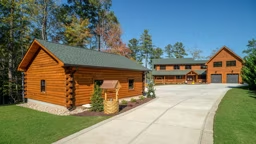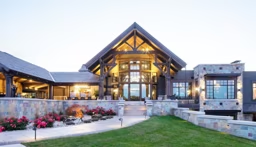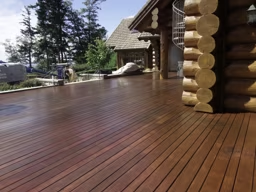 |
Protecting your Home from Wildfires Careful planning and preparation will ensure your home escapes a blaze |
Roofing: Burning embers landing on wood shingle or wood shake roofs has destroyed hundreds of homes. If you already have a wood roof, you can reduce the danger by treating it with fire-retardant materials. Fire department authorities say that some products provide a high degree of fire resistance. However, long-term protection isn't guaranteed, and you may have to re-treat the wood periodically.If you're building a new home or are ready to replace an existing roof, consider non-combustible or fire-resistant materials, such as Class-A asphalt shingles, metal, cement and concrete products, or terra-cotta tiles. Windows: Double-pane windows, with insulating air between the panes, fare better than single panes, which often break from rapid temperature changes during a fire, or from airborne burning objects striking them. Tempered glass is a better choice than plate glass, especially for large picture windows. Also, smaller panes hold up better than large ones. Vents: Vents around the attic, under the eaves and under floors are other entry points for hot embers. To prevent sparks from entering your home, cover vents with wire mesh screens no larger than one-eighth inch square. Your Outdoor Space Gutters: Keep gutters, eaves and roof clear of leaves and other debris, particularly dry needles. Sweep these areas often during the fire season. Observe where leaves collect in your yard; those are the same places that wind will carry burning embers. Fences: A wooden fence can act as a fuse leading right to your home. To lessen fire danger, don't attach a wood fence directly to your house. Instead, attach it to a cement pillar, a section of wire fence or a gate. Decks and porches: A wood patio deck or porch can be a hazard especially if you allow combustible materials and debris to accumulate beneath it. Don't keep flammable materials, such as firewood, under your porch or deck. And install wire mesh one-eighth inch square or less from the overhangs to the ground to prevent flammable and burning material from getting under your deck or porch. Propane: Make sure your storage tank is at least 10 feet from the house-the farther away the better. Keep the tank area clear of brush and wood products, and ensure that the tank is regularly serviced. Other combustible materials: Keep woodpiles and other combustible materials well away from the house. And if a wildfire is approaching, Randy suggests you "do in advance what firefighters do when they get there: toss everything that will burn away from the house, such as lawn furniture, woodpiles and decking." One house in his area was saved because the owner had someone cut down all the trees around his home just days before the fire reached the neighborhood. |











